Mountain Bike Geometry Explained
Mountain bike geometry can be confusing. Here we explain the most important MTB geometry numbers, what they are and what they mean. This will help you to better understand the geometry tables of the bikes you are interested in.
Head Angle
Head tube angle affects how steep the fork is, and is the angle between the fork and the ground. A slack head angle will be more stable, while a steep one will make the bike more nimble.
Head angles are slacker on more gravity focused bikes:
Cross-country: 71° - 68°, Trail: 68° - 65°, Enduro: 65° - 64°, Downhill: 64° - 61°
MTB geometry has tended to get slacker through the years and this trend continues.
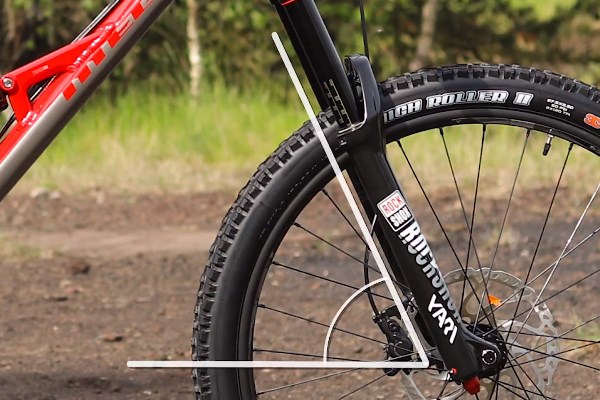
Top Tube Length
Top tube length is the horizontal measurement from the steerer tube to the seatpost.
Over the years, mountain bike top tube lengths have tended to get longer. Shorter stems are fitted to maintain the reach measurement for each bike size.
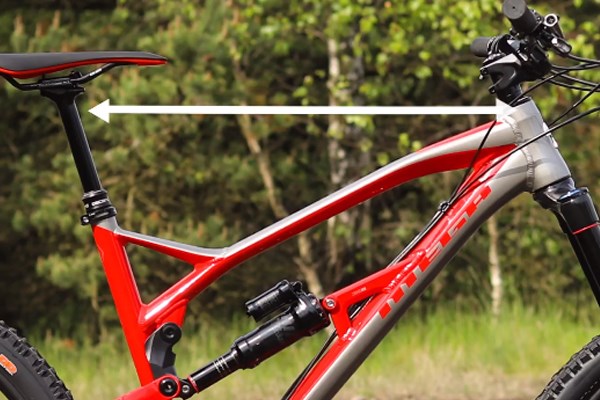
Reach
Reach is also a horizontal measurement, that goes from the steerer to the point directly above the bottom bracket. Reach is the main measurement that affects how ‘long’ a bike feels in the riding position.
You can adjust the reach on a mountain bike by fitting a shorter or longer stem.
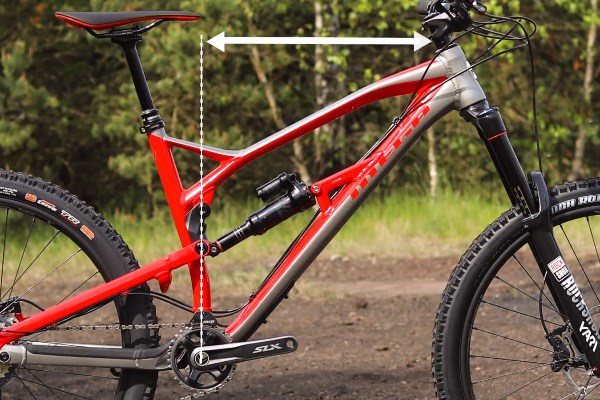
Stack
Stack is the vertical distance from the bottom bracket to the steerer. This is the main measurement of and is how ‘tall’ a bike feels.
Stack height can be adjusted slightly by re-positioning the spacers around the stem. This will increase or decrease the effective stack height.

Bottom Bracket Height
Bottom bracket height is the distance from the bottom bracket or BB to the ground. Combining this with crank length tells you how much pedal clearance you will have.
Full suspension bikes have a higher bottom bracket height than hardtails. This is so your pedals don’t hit the ground when the suspension compresses.

Bottom Bracket Drop
Bottom bracket drop is a different way of measuring BB height. This is the vertical distance from the horizontal line that joins the two wheel axles to the bottom bracket.
This way of measuring bottom bracket height is more commonly used on road bikes, but some manufactures also use it for their mountain bikes.
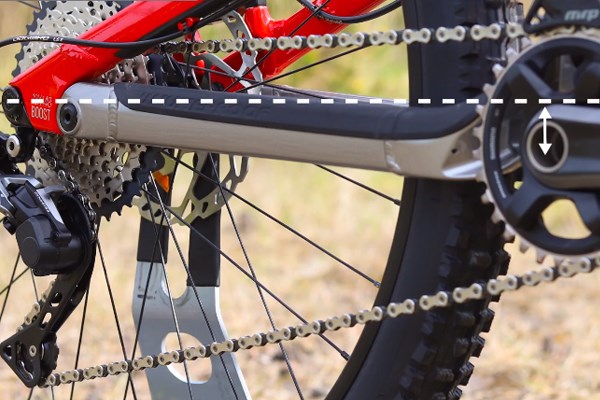
Wheelbase
Wheelbase is the length of the bike from axle to axle. As well as top tube length, head angle and chainstay length all affect the wheelbase.
Cross country bikes have much shorter wheel bases than trail or enduro bikes. Downhill bikes are the longest.
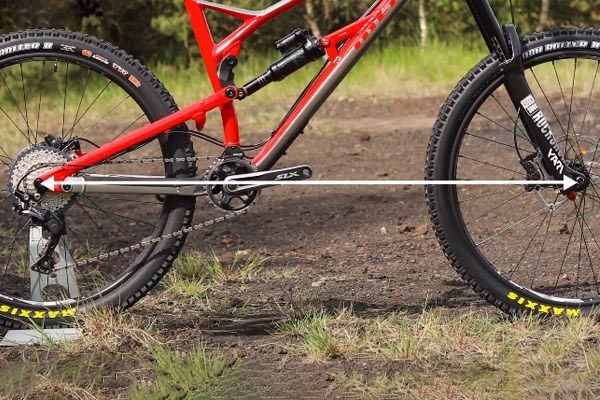
Chainstay Length
Chainstay length is distance from the BB to the rear axle. Short chainstays make tight turns easier, while long ones help keep the front wheel on the ground while climbing.
A chainstay length of 435mm or less is considered short for a full sus MTB. Long travel bikes and 29ers tend to have longer chainstays to make room for the suspension to move.
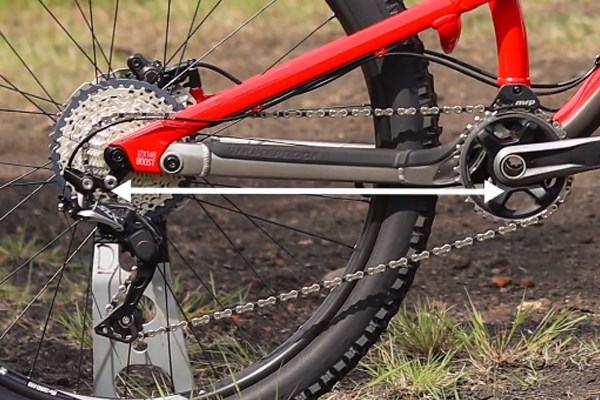
Front Centre
Front Centre is the measurement from the bottom bracket to the front axle. Top tube length, head angle and fork length all effect the front centre measurement.
For a given reach and fork length, bikes with slacker head angles have longer front centre measurements.
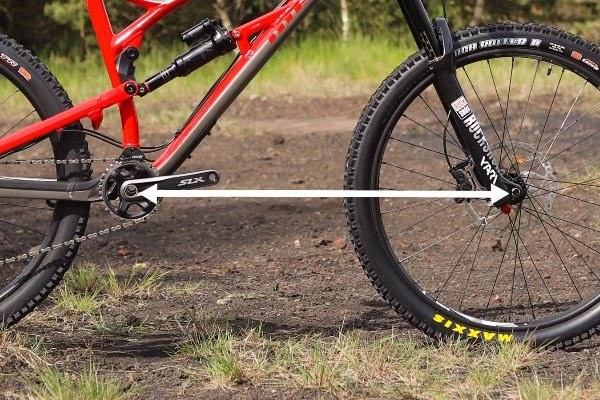
Seat Tube Angle
Seat tube angle is the measurement of the seat tube angle relative to the ground. Steeper angles, that put the saddle over the bottom bracket, make climbing easier and pedalling more efficient.
Seat tube angles of 72° - 74° are what you need for efficient climbing.
You can adjust the effective seat tube angle slightly by sliding the saddle forward or backwards on the rails.
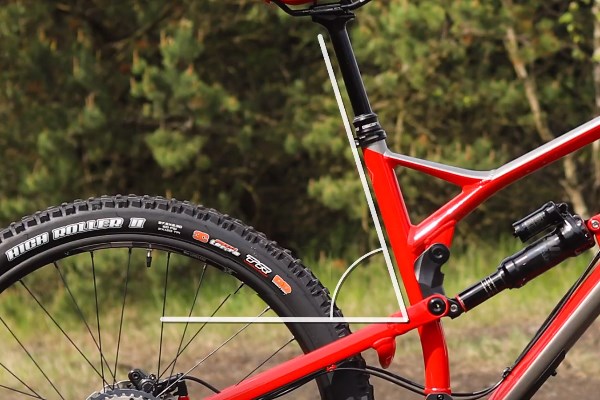
Standover Height
Standover height is the distance between the ground and the top tube, at the point where you would naturally stand astride the bike. Low standover heights make it easier to move around on the bike while you're riding.
Anything below a 700mm stand over height is considered low, even on small sized unisex bikes.
Women’s bikes tend to have lower stand over heights.
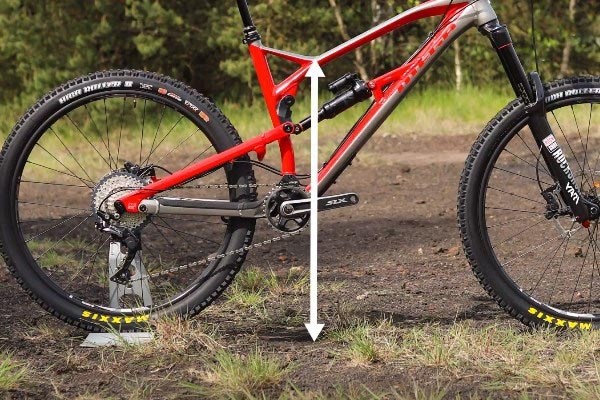
Geometry tables often include other geometry numbers as well, but these are the most important ones you need to look at when choosing your new bike.